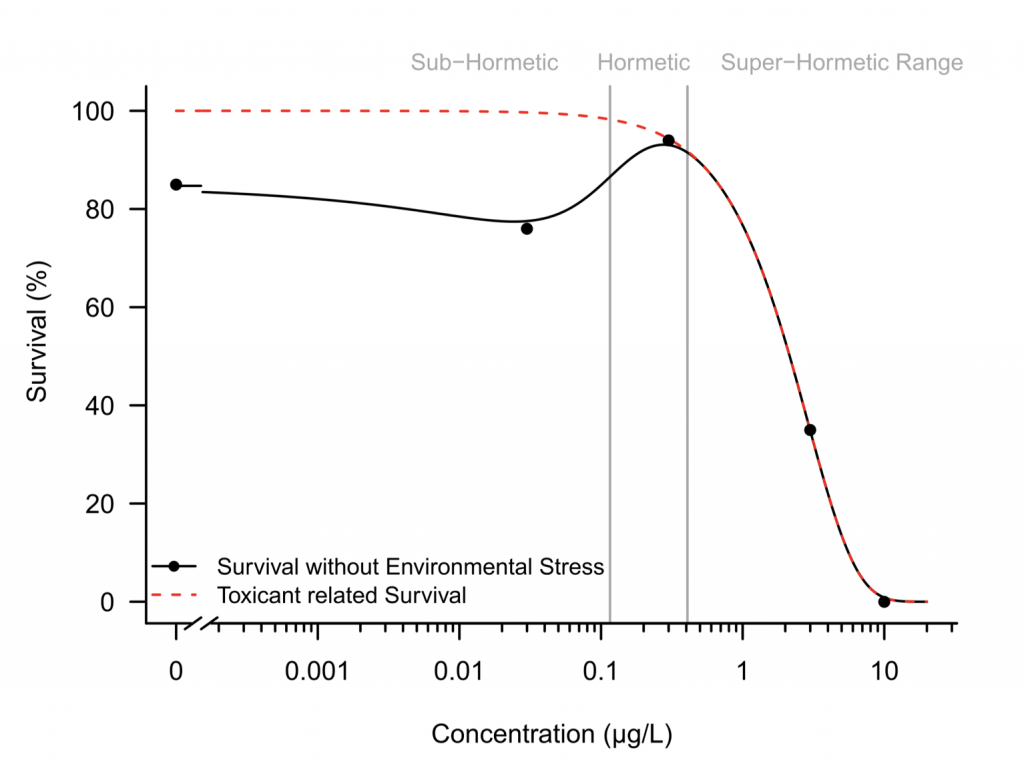In this post, Matthias Liess introduces their recently published paper “Predicting low-concentration effects of pesticides”.
Toxic substances such as pesticides can cause effects on sensitive individuals in concentrations up to ten thousand times lower than previously assumed. For understanding these results, one must consider that the level of stress plays an important role. Most surprising: not only too much fluctuating environmental stress can lead to higher sensitivity to toxicants, but also too little!
Whether a toxicant harms or kills an organism, and if so in which extent, depends on its concentration and the sensitivity of the individuals exposed: the dose makes the poison. But that’s not all. Also, the magnitude of environmental stress is very important to determine the effect of a toxicant. Toxicant concentration, individual sensitivity and environmental stress thus interact in a triad of effects.

In our current study, we have investigated the role of these individual components. We wanted to find out how sensitive individuals can be better protected by risk assessment. Previous model calculations could not sufficiently predict the effects of low toxicant concentrations on sensitive individuals and species. But this is very important in both human and ecotoxicological risk assessment. This is because sensitive persons – such as children, sick or elderly people – or more sensitive species of an ecosystem obviously suffer damage even at much lower concentrations than previously assumed.
Our extensive investigation was triggered by an observation: At very low pesticide concentrations – far below concentrations that led to effects in previous studies – effects on sensitive organisms were observed. These effects have hardly been observed since such low concentrations are very rarely tested. Previously, it was assumed that pollutants only elicit effects in high concentrations after a threshold value has been exceeded. However, at such extremely low concentrations this is obviously not the case. We observed these unexpected effects at very low concentrations in almost all existing studies in which effects of such concentrations of toxicants were investigated. Also, in the present investigation in which we exposed the crustacean Daphnia magna to very low concentrations of the pesticide esfenvalerate.
The question that arises is: which process can induce effects in these low concentration ranges? The hypothesis is that toxicant stress meets internal stress. But what does that mean?
Under the influence of environmental stress – such as predation pressure, organisms become more sensitive to toxicants and therefore can be affected, or die at much lower toxicant concentrations than in absence of environmental stress. We were already able to quantify this relationship in an earlier study. Additionally, we are now able to show that individuals develop internal stress when they are exposed to too little stress from the environment. In fact, it seems like organisms are adapted to a certain degree of “external” stress. If it is missing, they develop “internal” stress.
And since external and internal stress add up, the sensitivity to toxicants increases drastically. The result: Sensitive individuals already react to extremely low concentrations of toxicants. These can be up to 10,000 times lower than the concentrations previously considered harmful so far. Thus, too much – but also too little stress increases sensitivity to pollutants. Optimal with regard to resilience against toxicant exposure would therefore be some fluctuating environmental stress, which reduces internal stress.
In order to make effects visible at low concentrations, we developed a model that enables a calculation of the internal stress and the resulting survival. We hope that our study will contribute to a more realistic environmental and human risk assessment – especially for sensitive individuals.
Link to the software: http://www.systemecology.eu/indicate/
The paper was authored by Matthias Liess, Sebastian Henz and Saskia Knillmann, and published open access in Scientific Reports.
